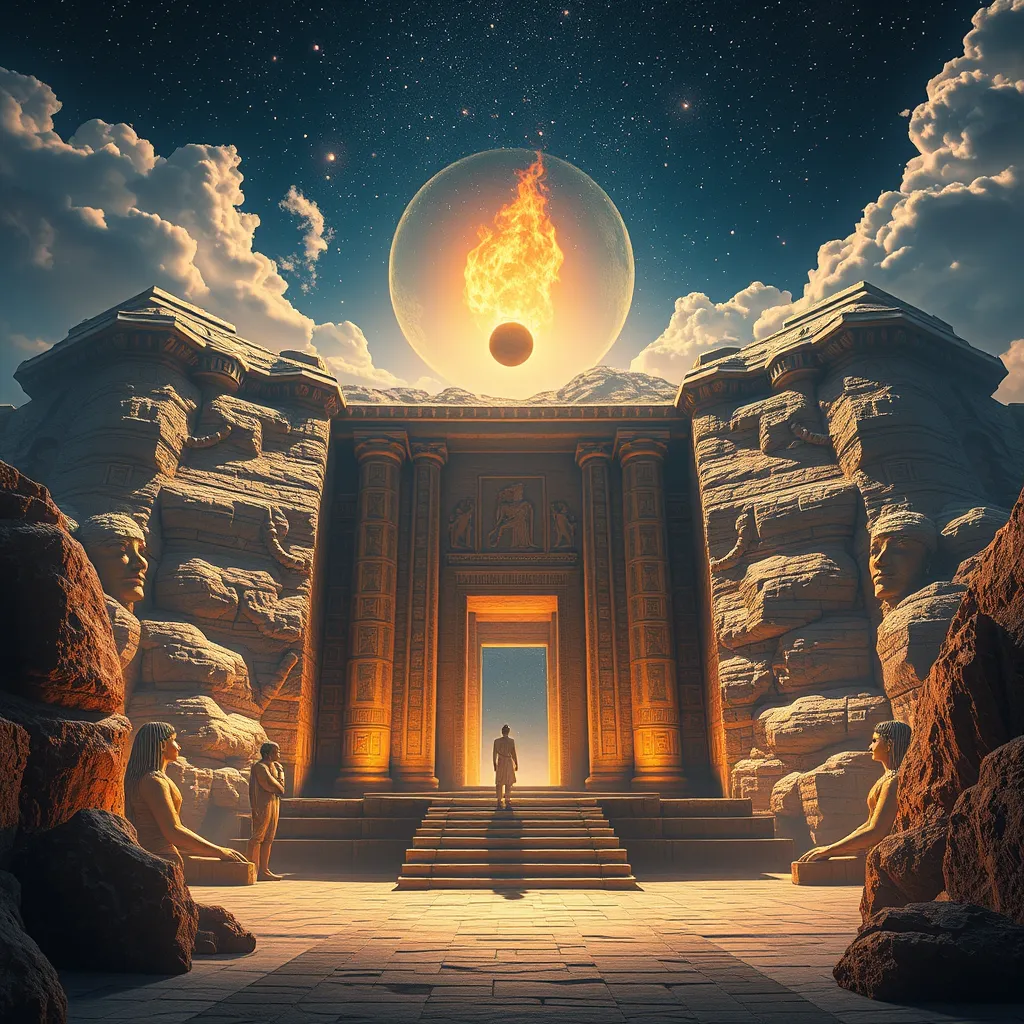The Duat: A Journey to the Heart of Eternity
I. Introduction to the Duat
The Duat, also known as the Egyptian underworld, is a fundamental concept in ancient Egyptian mythology. It represents the realm of the dead, a place where souls would journey after death. The significance of the Duat extends beyond mere geography; it embodies the beliefs of the ancient Egyptians regarding life, death, and the afterlife. Understanding the Duat is crucial for comprehending how the ancient Egyptians viewed existence and the journey toward eternity.
In the context of the afterlife, the Duat serves as a transitional space where the deceased navigate their fate. It is a complex and multifaceted realm filled with challenges, deities, and transformative experiences that ultimately lead to judgment and, potentially, eternal life.
II. The Mythological Landscape of the Duat
The Duat is often depicted as a vast and intricate landscape, richly layered with symbolic meaning. It is described as a dark, labyrinthine world, filled with rivers, fields, and various realms, reflecting the duality of creation and chaos that the ancient Egyptians believed governed existence.
- Geographic Description: The Duat is often visualized as lying beneath the earth, accessible through tombs and burial sites. It is characterized by its winding rivers, such as the River of Fire, and desolate landscapes that echo the trials faced by the souls of the deceased.
- Symbolic Representation: Each feature of the Duat holds symbolic significance, representing aspects of life, death, and rebirth. The rivers may symbolize the flow of time and the passage of the soul, while the fields represent the bountiful afterlife awaiting the worthy.
III. Deities and Entities of the Duat
The Duat is populated by a variety of gods, goddesses, and other entities that play crucial roles in the journey of the soul. These deities are often depicted in ancient texts and artwork, each with distinct functions and attributes.
- Important Gods:
- Osiris: The god of the afterlife, resurrection, and regeneration, Osiris is a central figure in the Duat, overseeing the judgment of souls.
- Anubis: The jackal-headed god of mummification and the afterlife, Anubis guides souls through the Duat and oversees the weighing of the heart.
- Ma’at: The goddess of truth and justice, Ma’at represents the moral order of the universe and is essential in the judgment process.
- Spirits and Guardians: The Duat is also inhabited by various spirits and guardians, such as the serpent Apophis, who represents chaos and must be overcome by the deceased.
IV. The Journey through the Duat
The journey through the Duat is a perilous path that every soul must traverse after death. This journey is fraught with trials, challenges, and encounters with various deities and entities that test the worthiness of the deceased.
- The Soul’s Passage: Upon death, the soul embarks on a journey guided by Anubis, navigating through dark passages and facing numerous obstacles.
- Trials and Challenges: The deceased must overcome challenges such as:
- Confrontations with malevolent beings.
- Puzzles and riddles that test their knowledge and moral integrity.
V. The Weighing of the Heart Ceremony
One of the most significant events in the Duat is the Weighing of the Heart ceremony, a pivotal moment that determines the fate of the soul. This ceremony underscores the ancient Egyptians’ emphasis on morality and the balance of one’s actions in life.
- Significance of the Ceremony: The heart of the deceased is weighed against the feather of Ma’at, symbolizing truth and justice. A heart that balances with the feather indicates a life lived in accordance with Ma’at, leading to eternal life.
- Roles of Anubis and Ma’at: Anubis oversees the weighing process, ensuring fairness, while Ma’at represents the ideals of truth and justice, emphasizing the moral standards by which souls are judged.
VI. The Concept of Eternal Life in the Duat
The Duat is not merely a realm of judgment; it is also a place where the concept of eternal life is deeply ingrained. The ancient Egyptians believed in the possibility of resurrection and transformation, making the Duat a dynamic space of potential.
- Beliefs about Immortality: The notion of the soul’s immortality is central to ancient Egyptian spirituality. Successful navigation of the Duat could lead to a rebirth, allowing the deceased to join the gods in the afterlife.
- The Duat as a Place of Transformation: The Duat serves as a transformative space, where the soul undergoes trials that ultimately lead to enlightenment and resurrection, symbolizing hope and continuity beyond death.
VII. The Duat in Ancient Egyptian Art and Literature
The Duat has been a rich subject in ancient Egyptian art and literature, with depictions that illuminate its significance in the culture. Tomb paintings, texts, and artifacts often illustrate the beliefs surrounding the afterlife and the journey through the Duat.
- Depictions in Tomb Paintings: Many tombs contain elaborate paintings and carvings that depict scenes from the Duat, showcasing the various deities, landscapes, and the journey of the soul.
- Influence on Modern Interpretations: The imagery and concepts associated with the Duat have influenced contemporary interpretations of the afterlife, contributing to the ongoing fascination with ancient Egyptian beliefs.
VIII. Conclusion: The Legacy of the Duat in Contemporary Culture
The Duat continues to captivate the imagination of people today, reflecting the enduring legacy of ancient Egyptian spirituality and beliefs about life and death. Its themes of journey, judgment, and transformation resonate across cultures and eras.
- Continued Fascination: Modern spirituality often revisits concepts found in the Duat, exploring ideas of the afterlife, morality, and the nature of existence.
- Reflections on Ancient Beliefs: The beliefs surrounding the Duat offer profound insights into the human experience, prompting reflections on mortality, ethics, and the quest for meaning in life.




